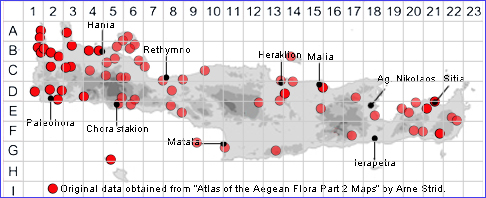SPECIES DESCRIPTION
BALLOTA PSEUDODICTAMNUS subsp. PSEUDODICTAMNUS
Family and Genus:- See- LABIATAE
Common Names:- False dittany
Homotypic Synonyms:- None
Meaning:- Ballota (Gr) A name used by the Greek physician and botanist
Dioscorides.
Pseudodictamnus (L) False or pseudo dittany (reference to the
leaves).
General description:- Perennial
Stems:-
1) Up to 30-50 cm. yellowish-tomentose.
Leaves:-
1) Middle cauline, 2-3 ? 1·5-2 cm, subcordate at the base, broadly ovate to almost
circular.
2) Petiole, 2-4 mm.
Flower:-
1) Verticillasters, 6-12-flowered.
2) Corolla, 14-15 mm. tube shorter than or equalling the calyx, with a ring of hairs
inside.
3) Bracteoles, 4-8 mm, linear to spatula-shaped, membranous.
4) Calyx, 8-10 mm, 10-veined, infundibuliform,
a) limb, 7-8 mm diam, irregularly crenate.
b) lobes 5-10, the larger up to 2 mm, broadly triangular-acuminate, more or less
mucronulate.
5) Stamens, parallel, the outer pair the longer.
6) Anther-cells, diverging.
7) Style-branches, subequal.
Fruit:-
1) Nutlets oblong, rounded at the apex.
Key features:-
1) Calyx-limb, 7-8 mm diam.
Habitat:- Dry, rocky slopes with open dry shrubby vegetation and open coniferous
woodland, often gregarious and sometimes dominant. 0-1350 m.
Distribution:- S Aegean Is. and Crete; naturalised in Italy and Sicily. Commonly
grown in gardens for its foliage.
Flowering time:- Apr-June.
Photos by:- Steve Lenton
Status:-
Conservation status (for threatened species): Rare (R) according to IUCN 1997

